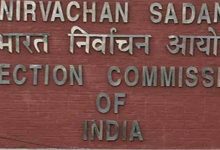The two previous occasions when Indians had to grapple with so many zeroes were first, when Modi promised to bring back all the black money stashed abroad and deposit Rs15 lakh each to the account of every Indian; and second when zeroes were floating all over the place when the losses in the 2GSpectrum scam were being estimated. Enterprising Indians tried to put down these numbers to the last zero but met with zero success. Here’s an economic analysis, for Different Truths.
Indians gave the zero to the world. Indian sages understood zero to mean absolute nothingness as well as its potential for infinite power. For them, the zero was not just an entity in the place value system, it had a philosophical connotation. The quintessential Indian spirituality saw everything originating in shunya, the Indian word for zero and ending up in shunya, or nirvana, a state of total bliss in which nothing mattered. There are even suggestions that the mathematical zero originated in the spiritual shunya. Saffron elements are now going out of their way to re-discover and re-establish ancient Indian knowledge, though mostly for the wrong reasons. Finance Minister Arun Jaitley has done his bit, adding to the mysticism of zero, conjuring up a figure that would set us on an astronomical odyssey. But there is a lurking suspicion that in the process he may have placed Indians on the wrong side of zero.
 Jaitley’s budget has announced Modi-care, bettering even Obamacare, which is refusing to go away despite the best efforts of President Trump. Modi-care, we are told, will be the world’s largest health cover programme ever, providing for annual health coverage of Rs 5 lakh per family for 10 crore families below poverty line, and assumes an average family size of 5 persons, which would extend the coverage to 50 crore Indians, that would be close to 40 percent of the population.
Jaitley’s budget has announced Modi-care, bettering even Obamacare, which is refusing to go away despite the best efforts of President Trump. Modi-care, we are told, will be the world’s largest health cover programme ever, providing for annual health coverage of Rs 5 lakh per family for 10 crore families below poverty line, and assumes an average family size of 5 persons, which would extend the coverage to 50 crore Indians, that would be close to 40 percent of the population.
It is obvious that the health coverage would be provided through insurance, which means whoever is contributing the premium provides only a fraction of the total cost of coverage. But still, medical coverage has a cost and someone has to foot the bill and it may be safely assumed that a large portion of this will come from the government. Granted that there is no reason to believe that all the 50 crore people would fall sick at the same time every year. But hypothetically, if they do, the cost of such treatment would be a neat 50 lakh crore rupees. Even maths wizard Shakuntala Devi, who died 5 years before Jaitley announced his epoch-making scheme, would have faced trouble putting down the figure to paper. Some online calculators seemed to have simply given up, returning the result as 5e+13.
The two previous occasions when Indians had to grapple with so many zeroes were first, when Modi promised to bring back all the black money stashed abroad and deposit Rs15 lakh each to the account of every Indian; and second when zeroes were floating all over the place when the losses in the 2GSpectrum scam were being estimated. Enterprising Indians tried to put down these numbers to the last zero but met with zero success. But apparently, some kind of consensus emerged, with two widely divergent numbers being quoted: Rs 11 lakh crore and Rs 22 lakh crore of black money lying in secret foreign bank accounts. The 2G spectrum notional loss, version I.0, was Rs1.7 lakh crore, as estimated by the CAG, but in version II.0, it became another powerful zero.
We must thank our stars that the annual health coverage in Jaitley’s grand scheme has been pegged at only Rs5lakh; he could have even made it Rs 10 lakh as he had no constraints about the number of zeroes to be used. That would have set us chasing the planets, following the trail of our ancient sages, who invented the zero so that they could record the distance between sun, earth, moon and other planets.
And now back to some earthly numbers. Theories abound on the allocation made for Modi-care in the budget. While making the budget speech, Arun Jaitley only said adequate resources would be found to implement the scheme. One estimate puts the allocation as Rs 2000 crore, which would provide for a per capita premium of Rs 40 per year. But that is too little for the kind of coverage that Jaitley had in mind, or his budget made it appear. New India Assurance chairman G Srinivasan has estimated that the average premium required to provide Rs 5 lakh coverage for each of the 10 crore families would be in the range of Rs 4,000 and Rs 5,000. That would work out to Rs 40,000 crore to Rs 50,000 crore per year.
 As against this, the total allocation for the health sector in this year’s budget is only Rs 56,226 crore, an increase of just 12 percent over the previous year. Embarrassed by a general feeling that the cat is out of the bag, NITI Aayog did some quick firefighting by working out, within a day of the announcement of the plan, a premium of Rs1,000 to Rs1,200 per family. It further clarified that the plan will be funded in 60:40 ratio by the Centre and the states and that the outgo will be Rs 10,000 crore to Rs 12,000 crore for the Centre every year.
As against this, the total allocation for the health sector in this year’s budget is only Rs 56,226 crore, an increase of just 12 percent over the previous year. Embarrassed by a general feeling that the cat is out of the bag, NITI Aayog did some quick firefighting by working out, within a day of the announcement of the plan, a premium of Rs1,000 to Rs1,200 per family. It further clarified that the plan will be funded in 60:40 ratio by the Centre and the states and that the outgo will be Rs 10,000 crore to Rs 12,000 crore for the Centre every year.
But, if resources are to be found for the new plan from the existing allocations, there will virtually be a few zeroes left for other programmes, of which there are plenty in the new budget. The new plan will replace the Rashtriya Swasthya Bima Yojana (RSBY), which used to provide an annual coverage of Rs 30,000. A similar proposal for health coverage of one lakh rupees was mooted in last year’s budget, but it never took off. If October 2 is the target rollout date, it is doubtful whether the much-trumpeted scheme would yield the desired political dividend for the ruling alliance in time for the elections.
K Raveendran
©IPA Service
Photos from the Internet
#PoliticalDivide #BudgetSnapshot #Shunya #IndiaGaveZeroToTheWorld #IndianBudget #Deficits #Revenue #Expenditure #IPA #DifferentTruths






 By
By

